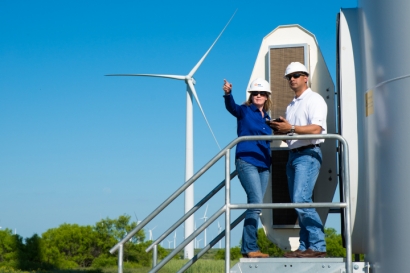
It comes after the project team secured planning consent for some design changes in September last year. These include an increased blade tip height, from 138.5m to 149.9m which will allow for greater electricity generation, and an increased operational life from 25 years to 30.
Planning permission allows for the installation of eight turbines, but EDF Renewables will only build seven turbines. This is down to advances in turbine technology, so fewer are needed to fulfil the generating requirements of the site.
With a generating capacity of up to 30.1 megawatts (MW), West Benhar will supply low carbon electricity to power more than 18,000 homes*
The project is expected to take up to 15 months to complete, with turbine delivery starting in mid-February 2022, and completion in June 2022.
Scottish contractor I and H Brown has been appointed to manage construction of the project, their work includes building the foundations and substation. Vestas will supply the seven V117 4.3 MW machines.
Stelios Christodoulou, Construction Project Manager, EDFR, said, “We are excited to get work under way, this project is an important addition to our portfolio of onshore wind developments. Not only will it accelerate our journey to a net zero future but it shows our commitment to investing and growing in Scotland”
“We will be engaging with the local communities in the coming months to keep them up to date with the project and discuss both the community fund and opportunities for community investment.”
EDF Renewables already has an installed capacity of 500 MW of onshore wind in Scotland.
*Load factors based on the five year rolling averages on unchanged configuration basis using Table 6.5 of ‘Digest of UK Energy Statistics’ - latest figures as per July 2020 release. Based upon the average domestic electricity consumption per home (temperature corrected) per the Energy Consumption in the UK (published July 2020, Table C9 of ECUK: Consumption data tables).

